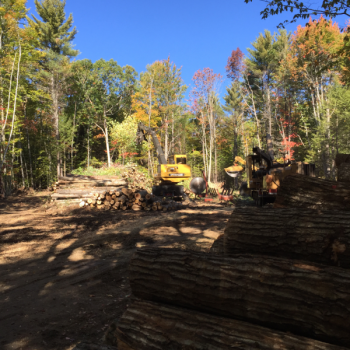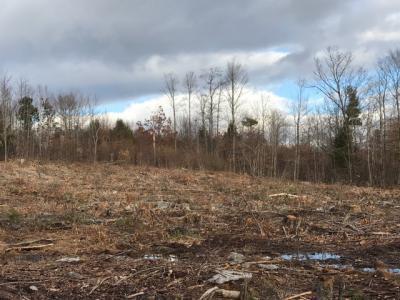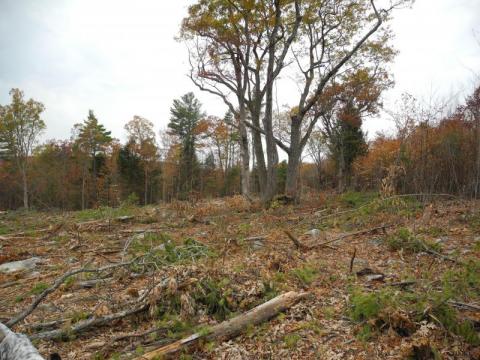Working for Woodcock: Creating Young Forest for Wildlife
We have owned a home and land in Wolfeboro since 1994. Soon after our purchase we discovered that we were privileged to own a woodcock singing ground. A singing ground is a place where male woodcock display in the Spring to attract and mate with female woodcock and raise their young. The display is called the "Sky Dance." Our family has derived immense pleasure from watching our harbingers of spring annually.
Our property includes about 90-acres of forested woodland, consisting of mostly mixed hardwoods and pine on dry, rocky, thin soil with a few damp areas and a small wetland. Several acres had been cleared for the house and views. These acres were returning to shrubby low growth and young trees at the time of our purchase. As time has gone on we realized that we were not seeing as many woodcock displaying and that it was due to maturation of the trees (cover) on our property. We had very little low, shrubby area remaining.

The log landing and equipment used for the timber harvest
In 2015 we participated in the NH Coverts Project Workshop through UNH Cooperative Extension and NH Fish and Game. It was amazing, fascinating, very educational and confirmed our suspicions. For woodcock (a species of concern nationally) and many other species, shrubby habitat is essential for a part of their life. Shrubby habitat areas are diminishing on our property and nationally.
We hired a NH licensed forester to evaluate our property, develop a forest management plan, and coordinate a forest harvest to increase the early successional habitat. Help and guidance were provided by our county Cooperative Extension forester and by a state wildlife biologist, as well as a wildlife biologist from the Ruffed Grouse Society in an effort to design the harvest in a way that would provide the best habitat given our forest ecology.

The area harvested was adjacent to forest that had been harvested previously to create a diversity of forest age classes.
Our forest harvest was conducted in October 2016 when our land was dry but late in the growing season. Dry conditions allowed the harvesting equipment to tread lightly on our land and to minimize possible erosion. Fall harvesting near the end of the growing season and placement and orientation of harvest areas to improve the chances for vigorous aspen regeneration should promote optimal habitat for woodcock and grouse as well as regrowth of brushy habitat for songbirds, browse for deer and moose, wildflowers and flowering shrubs for pollinators, and improved mast (nuts and berries) production from oak, beech, cherry and hophornbeam for many species. In total, there are around 12 acres of patch cuts, ranging in size from 1 acre to 6 acres.

Snags (dead standing trees) and groups of oak trees were left standing to provide cover and food for wildlife, as well as a seed source.
We expect to see results in only a few years. The benefits for early successional species should last for 15 to 20 years after which time the regrowth will be too old to support some of these species. Then it will be time to cut adjacent areas to refresh the benefits for all those species that require very young growth to prosper.
For more information on managing forests for woodcock and other wildlife that use young forest, visit:

